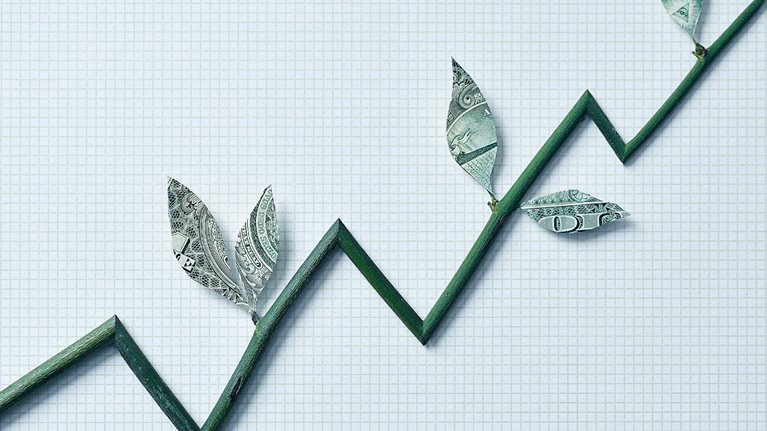Overall, consumer confidence remained broadly stable across our surveyed countries but still leaned toward saving rather than spending—although confidence dipped in China. In Brazil, consumer confidence rose to 96.8 in August, up from 94.8 in July—the highest reading since February 2014. Russia is somewhat of an outlier among our surveyed economies: domestic consumer demand remains robust, fueled by growth in real wages and consumer credit, which in July was up by 11% since the start of the year.
Core inflation has been on a downward trend in the US, standing at 4.3% for the 12 months ending August 2023 (4.7% July 2023)—and significantly down from the September 2022 figure of 6.6%. The Federal Reserve Bank of New York’s one-year-ahead inflation expectation rose to 3.6% at the short-term horizon, breaking a series of four consecutive declines. Overall, the inflation outlook remains stable with inflation expectations of around 2.0–2.5%. Eurozone inflation is expected to be 4.3% in September 2023, down from 5.2% in August 2023 (5.3% in July), according to Eurostat—the main driver being food-price inflation (9.7% in August but down to 8.8% in September). In the UK, consumer price index (CPI) inflation unexpectedly fell to 6.7% in August (6.8% in July), while core inflation (excluding the price of energy, food, alcohol, and tobacco) dropped to 6.2% from 6.9%. Inflation is resurgent in Russia, affecting both consumers and producers; it is declining in India after recent increases and remains close to 0% in China. Oil prices surged to $85–90 per barrel amid OPEC’s extension of oil production cuts, whereas food prices are continuing the downward trend that began in 2022.
In August, central banks in the eurozone, Russia, and the UK raised interest rates, whereas Brazil’s central bank reduced interest rates for the first time since 2021 in July. The eurozone and Russia raised interest rates again in September, with the European Central Bank (ECB) hiking its key interest rate by 25 basis points to 4.5% on September 14 and rates in Russia reaching 13.0%. In the US, September’s Federal Open Markets Committee (FOMC) meeting concluded with no new hikes of the current interest rate, while the Bank of England maintained its policy rate at 5.25% this month. Meanwhile, US national debt reached a historic milestone by passing $33 trillion for the first time.
The buoyancy of India’s economy contrasts with other surveyed countries. The economic activity index for the second quarter of 2023 nowcasts growth of 6.6% in India versus real GDP growth of 7.8% in the first quarter (April–June). Meanwhile, annual average real GDP growth in the eurozone is expected to slow from 3.4% in 2022 to 0.7% in 2023 before recovering to 1.0% in 2024 and to 1.5% in 2025. The ECB has significantly downgraded its short-term outlook amid deteriorating survey indicators and tighter financing conditions, including more adverse credit supply effects. The Bank of England anticipates more modest near-term growth below 0.5%, while the OECD’s interim September 2023 outlook sees UK GDP growing by 0.3% in 2023 and 0.8% in 2024. By contrast, in the emerging economies, China’s industrial output growth accelerated to 4.5% year-on-year in August (3.7% in July), while Russia’s economy is expected to continue to grow this year by around 2.0–2.5%, with quarterly growth likely to slow toward the end of the year. Brazilian GDP expanded by 0.9% quarter-on-quarter in the second quarter of 2023, compared to 1.9% in the first quarter.
Manufacturing has been contracting for the past 12 months, while the services sector has experienced a noticeable slowdown. In the world of manufacturing, emerging markets are expanding, while developed markets remain in the contraction zone (Exhibit 1). In the US, the industrial production index rose slightly in July to 102.9 (June 102). August’s purchasing managers’ index (PMI) for manufacturing declined to 48 after rising to 49 in July. It remains a bleaker picture in Europe: although the manufacturing PMI rose to 43.7 in the flash estimate for August, it remains squarely in contraction territory. It was a similar story in the UK: the UK manufacturing PMI posted 43.0 in August, down from 45.3 in July, the lowest level since May 2020. However, Brazil’s manufacturing PMI went the other way, edging into expansion after a ten-month sequence of contraction, with a rise from 47.8 in July to 50.1 in August. India’s manufacturing index reached 58.6 in August (57.7 in July)—attributable to new orders and production increases.

For services, the majority of countries reported worse PMI numbers than a month ago. In August, the US services PMI decreased again to reach 50.5, hovering just above the contraction zone, whereas the eurozone services PMI fell into contraction at 48.3—a 30-month low. It was a similar story for the UK, with the services PMI registering 49.5. In India, the services PMI dropped to 60.1 in August after surging to a 13-year high of 62.3 in July but remained well inside the expansion zone. Brazil’s services PMI edged up to 50.6 in August from 50.2 in July.
Unemployment rates remain stable across most surveyed economies, with slight decreases in Brazil and India and a small increase in the US, where the rate rose to 3.8%, slightly higher than July’s 3.5% (and comparable to the pre-COVID-19 level of 3.5% in January 2020). The UK’s unemployment rate for May–July 2023 increased by 0.5 percentage points during the quarter to 4.3%. In China the surveyed urban unemployment rate ticked down to 5.2% in August (5.3% in July).
Equity markets turned in a mixed performance in September; after a “red” August, some markets made gains, while others still struggled to grow. For US equities in August, year-to-date returns for the S&P 500 and Dow Jones were respectively down to 14.0% (19.5% in July) and up to 10.2% (8.3% in July). Across the Atlantic, European equities have been stable throughout 2023 with the Eurostoxx 600 index 3% below its highest value in 2023.
Data from World Trade Monitor indicates that world merchandise trade was down 0.6% in July 2023 compared to June, which also saw a 0.6% drop. July’s decrease was largely driven by a drop in trade for China. Across countries, exports rose for the US and Russia but fell for China, Brazil, and the eurozone, while imports increased for the US, Russia, and Brazil but fell for China. In China, contraction in cross-border trade slowed to –8.2% in August (–13.5% in July); exports growth declined by 8.8% in August (–14.3% in July), while imports growth was down 7.3% (–12.3% in July).
Data from the flash forecast (August 31) for the Container Throughput Index produced by the RWI - Leibniz Institute for Economic Research and Institute of Shipping Economics and Logistics (ISL) saw overall container trade decline across all regions, including Chinese ports, with a seasonally adjusted small decrease to 121.9 points in July versus June. Global supply chains are currently experiencing very low pressures, although pressures have been rising over recent months.
Encouragingly, the latest McKinsey Global Survey on the economy1 finds respondents sharing a more positive than negative outlook for the second consecutive quarter. They are also more hopeful than not about their countries’ economies, though sentiments vary significantly by region. In Europe, where respondents are most concerned about the effects of inflation, expectations for the next six months have turned more negative, whereas respondents in North America offer increasingly brighter views (Exhibit 2). Looking ahead, respondents in Europe are much less likely now than in March and June to expect improvements in their countries’ economies and are currently the least optimistic group across regions. India and North America respondents have become more hopeful about the months ahead.

“Economic conditions outlook during turbulent times, September 2023” is based on the responses of 997 participants to an online survey undertaken from August 31 to September 8, covering the full range of regions, industries, company sizes, functional specialties, and tenures.
Perceived top economic risks have shifted since June’s survey, as the threat of rising interest rates fades. Today, respondents—especially in Asia–Pacific—are keeping a close watch on economic activity in China. China’s slowing economic activity is the second-most-cited risk to the global economy—with 41% of respondents registering it as a concern—and also one of the top five most-cited risks to respondents’ home countries. Respondents in Greater China, meanwhile, now highlight uncertainty in the real estate sector most often as a threat to their economy. Additionally, geopolitical instability and inflation remain two of the most frequently cited risks both to the global economy and to respondents’ home countries.
McKinsey’s Global Economics Intelligence (GEI) provides macroeconomic data and analysis of the world economy. Each monthly release includes an executive summary on global critical trends and risks, as well as focused insights on the latest national and regional developments. View the full report for September 2023 here. Detailed visualized data for the global economy, with focused reports on selected individual economies, are also provided as PDF downloads on McKinsey.com. The reports are available free to email subscribers and through the McKinsey Insights app. To add a name to our subscriber list, click here. GEI is a joint project of McKinsey’s Strategy & Corporate Finance Practice and the McKinsey Global Institute.



